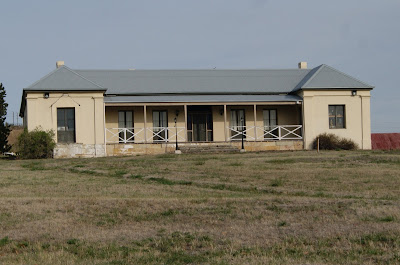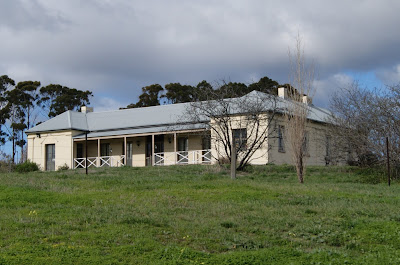Wells advertised the lease of Derwent Park in the Hobart Town Gazette and Van Diemen's Land Advertiser in June 1823. The advert described it as a 'most beautiful picturesque and highly improved farm' on the edge of the River Derwent and stated that the 'farmstead is a neatly finished residence.' The notice also explained that there was a reserved road linking with the centre of New Town which gave the property 'the advantage of communication by land with Hobart within an hour.'
Joseph Tice Gellibrand acquired Derwent Park in the mid-1820s. Gellibrand was a lawyer in England prior to being appointed attorney-general of Van Diemen's Land. Gellibrand arrived in Hobart in March 1824 but he did not get on with Lieutenant-Governor Arthur. Gellibrand was suspended by Arthur in February 1826 for 'conduct not befitting his high office'. In 1835 Gellibrand helped form the Port Phillip Association which supported John Batman's expedition to establish grazing properties in today's Victoria. Gellibrand prepared legal deeds for the transfer of the land from the aborigines, while the finance was arranged by Charles Swanston. Swanston was one of Gellibrand's neighbours, living about 2 kilometres away at New Town Park (now known as Swanston House). Gellibrand disappeared on an expedition to explore the hinterland of Port Phillip in 1837.
Derwent Park was purchased by John Dobson in August 1840 and he rented it out for a number of years before advertising it for sale in The Courier newspaper in March 1848. The advert described the 'delightful estate of Derwent Park' and 'the Mansion, erected on a scale adapted for the residence of a family of the highest respectability, commands, without exception, the finest prospect in this hemisphere.'
Derwent Park was purchased by John Curwen Walker for ₤1,345. Walker was the accountant at the Derwent Bank and had been renting Derwent Park before it was put up for sale.
The fire that destroyed the original Derwent Park homestead was reported in The Mercury newspaper in December 1864. The article stated that the 'valuable house containing 12 rooms known as Derwent Park was burnt to the ground … The origin of the fire is unknown, it seemed to have commenced in the back part of the premises, which being of wood were speedily destroyed.' A new homestead was subsequently built, but in the architectural style of an earlier period.
Henry Benjafield purchased Derwent Park for ₤4,600 in November 1891 and almost immediately sold it to the Tasmanian Government for ₤5,200. This caused some controversy in Parliament when it was suggested that Benjafield had been secretly acting on the Government's behalf but there was no evidence to support this and it was generally accepted that the Government had got the property at a good price.
The Government had acquired the property as the site for a proposed new gaol but this did not eventuate. Derwent Park was used as a Government Farm and the homestead was occupied by the ploughman in charge of cultivating the farm.
The Hobart City Council acquired 22 acres from the Government and constructed a large abattoir which opened in February 1908. The Electrolytic Zinc Company was established on the waterfront in 1916 and has gradually expanded over the intervening years to occupy most of the site. They currently own the building and it is operated by organizations that use the building to hold art classes for people with disabilities.
Information Source: Australian Heritage Database








